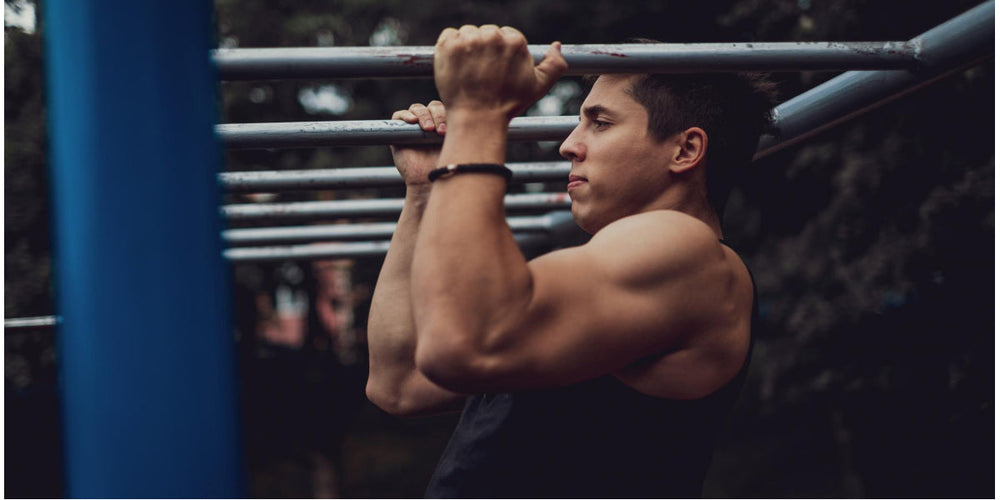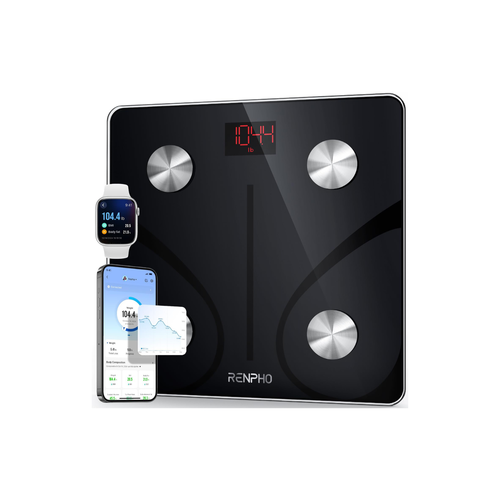Chin-Up Vs Pull-Up: What's The Difference?

Stay tuned to our latest news
Do you know that a simple hand grip has a significant effect on muscle growth? While the terms Chin-up vs Pull-ups are used interchangeably, the two moves target different muscle groups. Chin-ups and pull-ups are visually similar, both use a pull-up bar and your body weight for building upper body muscles.
Depending which upper body muscles groups you are targeting, the biceps and pecs muscles are used during chin-ups. However, should you want to engage your lats and traps– consider pull-ups!
The Major Differences Between a Chin-Up and Pull-Up
Research and studies have shown that both exercises increase muscle mass in the upper body. However, the main difference between these two is your hand grip and placement. When performing a chin-up, you hold with your underhand, with your palm (supinated grip) facing toward you. For a pull-up, grasp overhand, with your palm (pronated grip) facing away from your chin.
Do chin-up exercises when you want to primarily develop the biceps, posterior deltoid, or basically, the arms and back muscles. This also increases core strength for solid and toned abs, helping you lose belly fat in the process.
On the other hand, pull-ups can be more challenging, especially when you are a beginner. This is because pull-ups heavily rely on the lats more than the biceps. They are great for developing the upper back muscles, namely the lats, trapezius (traps), rhomboids, and levator scapulae.
Which One is Best for Beginners
Chin-ups are easier for those who are just starting out with their fitness journey, even for seasoned lifters. Why? Naturally, you have stronger biceps when you first start lifting. “Pulling vertically with a supinated grip feels more natural and efficient,” explains Fitness Consultant Jake Boly.
Chin-ups are easier to do. With that in mind, take that extra count and perform more repetitions with a chin-up grip.
How to Do Chin-Ups

1. Grasp the bar using a supinated grip.
2. Tighten your core muscles and leg muscles. Prevent leg swinging by crossing your feet behind you.
3. Bring your shoulder blades together and lift yourself until your chin is above the bar and hold for a second.
4. Slowly lower back to the starting position.
How to Do Pull-Ups

2. Bring your shoulder blades together by rolling your shoulders back and down.
3. Hang from the bar by lifting your feet off of the floor while keeping your core tight.
4. Lift your chest until your head peeks over the bar and hold for a second.
5. Lower yourself back down while maintaining a controlled manner
6. Return to the starting position.
Best Chin-up and Pull-up Variations
If you’re struggling to do a Chin-Up or Pull-Up, try these variations below.


Use rubber resistance bands to support your body weight. Start by choosing a thick resistance band of the right length. You can also get a training partner to support you while doing the assisted chin/pull-ups.
2. Hanging from the Bar
Hanging from the bar is an effective technique to develop grip and forearm strength, making it easier for you to perform other advanced variations.
While you are hanging from the bar, hold for an extra 30 seconds or more while keeping your shoulders and core engaged.

While the regular chin-ups and pull-ups start from the bottom position to the top, the negative variation, as the name implies, entails beginning at the top of the bar until you lower down.
To do this, step on a stool or an elevated surface to help you get to the top of the bar. From the upper position, slowly lower your body while engaging your core and leg muscles.
Recover from a Chin Up or Pull Up with a Massage Gun
Chin ups and pull ups are great exercises for strengthening your upper body, especially your back, biceps, and shoulders. However, they can also cause muscle soreness and stiffness, especially if you do them with high intensity or volume. To recover faster and prevent injuries, you may want to use a massage gun to relax your muscles and improve blood flow.
@renpho Cheers to a pain-free holiday season with the RENPHO Thermacool Massage Gun—a gift that says, 'I care about your well-being!' 🥂💆♂️#RENPHOrenew #RENPHOrecover #RENPHOrelax #blackfridayearlydeals, #blackfriday, #holidaygifts, #holidaygiftseries, #holidaygiftideas, #christmasgifts, #christmasgiftideas, #giftsforhim, #giftsforher, #giftideas, #christmas, #tiktokshop #TikTokShop #merrychristmas #vlogmass #adventcalendar #eatchristmas ♬ original sound - RENPHO
A massage gun is a device that vibrates rapidly against your muscles, aiming to loosen them and increase circulation. It can help you reduce pain, inflammation, and tension, as well as enhance your range of motion and performance. One of the best massage guns on the market is the RENPHO Active Thermacool Massage Gun, which has some unique features that make it ideal for chin up and pull up recovery.
It has five normal massage heads and one heating/cooling head that can adjust to eight different temperature settings. You can use the heat function to warm up your muscles before your workout, or to accelerate muscle recovery after your workout. You can also use the cold function to ease muscle tension and reduce swelling.
Conclusion
Although each exercise targets a distinct set of muscles, both of them are solid workouts for developing upper-body strength, muscle mass, and a healthy body. If you are a beginner, work on these assisted variants to develop the endurance required to perform strength training regularly.
Renpho Health Tips
-

Importance of Negative Reps for Muscle Growth
Nov 08, 2022
Read more >
-

Simple Healthy Weight Loss Habits: Training Your Brain to Stay Motivated
Nov 08, 2022
Read more >
-

Working Out? Here are 7 Tips to Make It Eco-Friendly
Oct 04, 2022
Read more >
-

Doctor Shares Tips to Track Your Weight Loss Progress
Sep 27, 2022
Read more >
-

Recovery Tips for Relieving Soreness Post-Workout
Oct 13, 2022
Read more >






